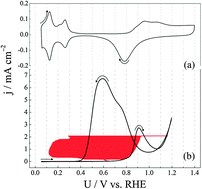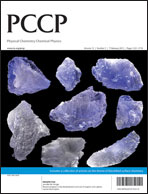Mechanistic aspects of the linear stabilization of non-stationary electrochemical oscillations†
Abstract
The problem of non-stationarity in experimentally recorded time-series is common in many (electro)chemical systems. Underlying this non-stationarity is the slow drift in some uncontrollable parameter, and it occurs in spite of the fact that all controllable parameters are kept constant. Particularly for electrochemical systems, some of us have recently suggested [J. Phys. Chem. C, 144, (2010), 22262–22268] an empirical method to stabilize experimental time-series. The method was exemplified for the electro-oxidation of

- This article is part of the themed collection: Electrified surface chemistry

 Please wait while we load your content...
Please wait while we load your content...